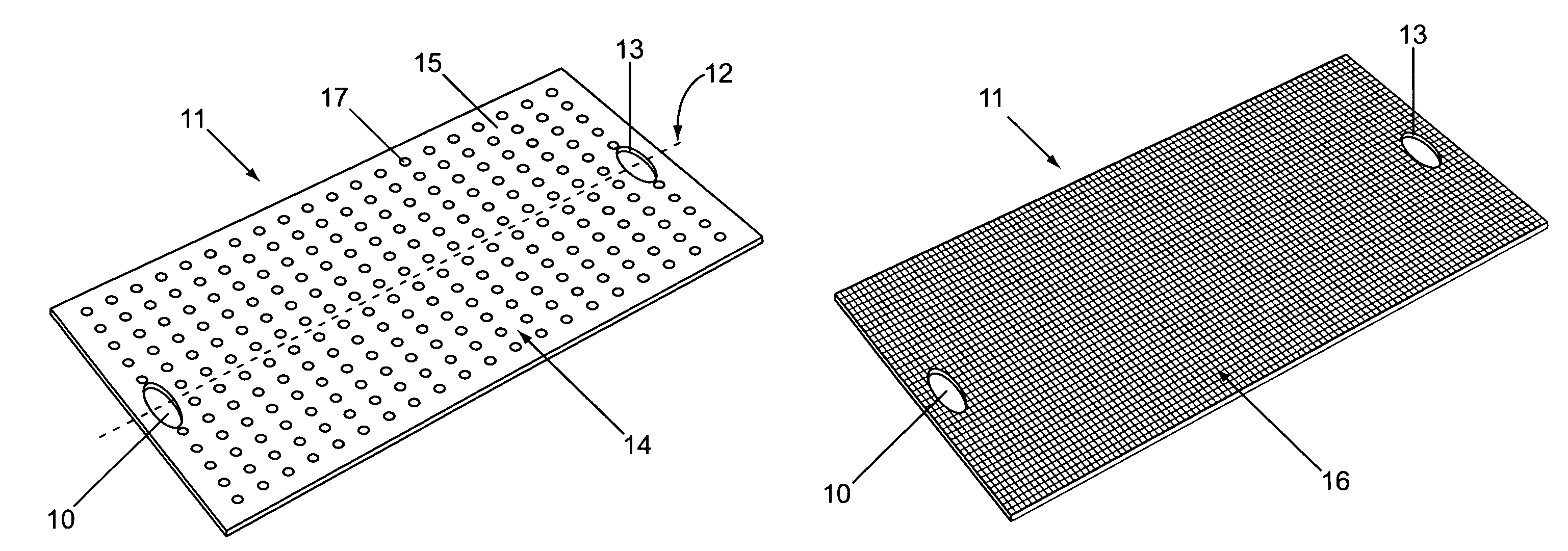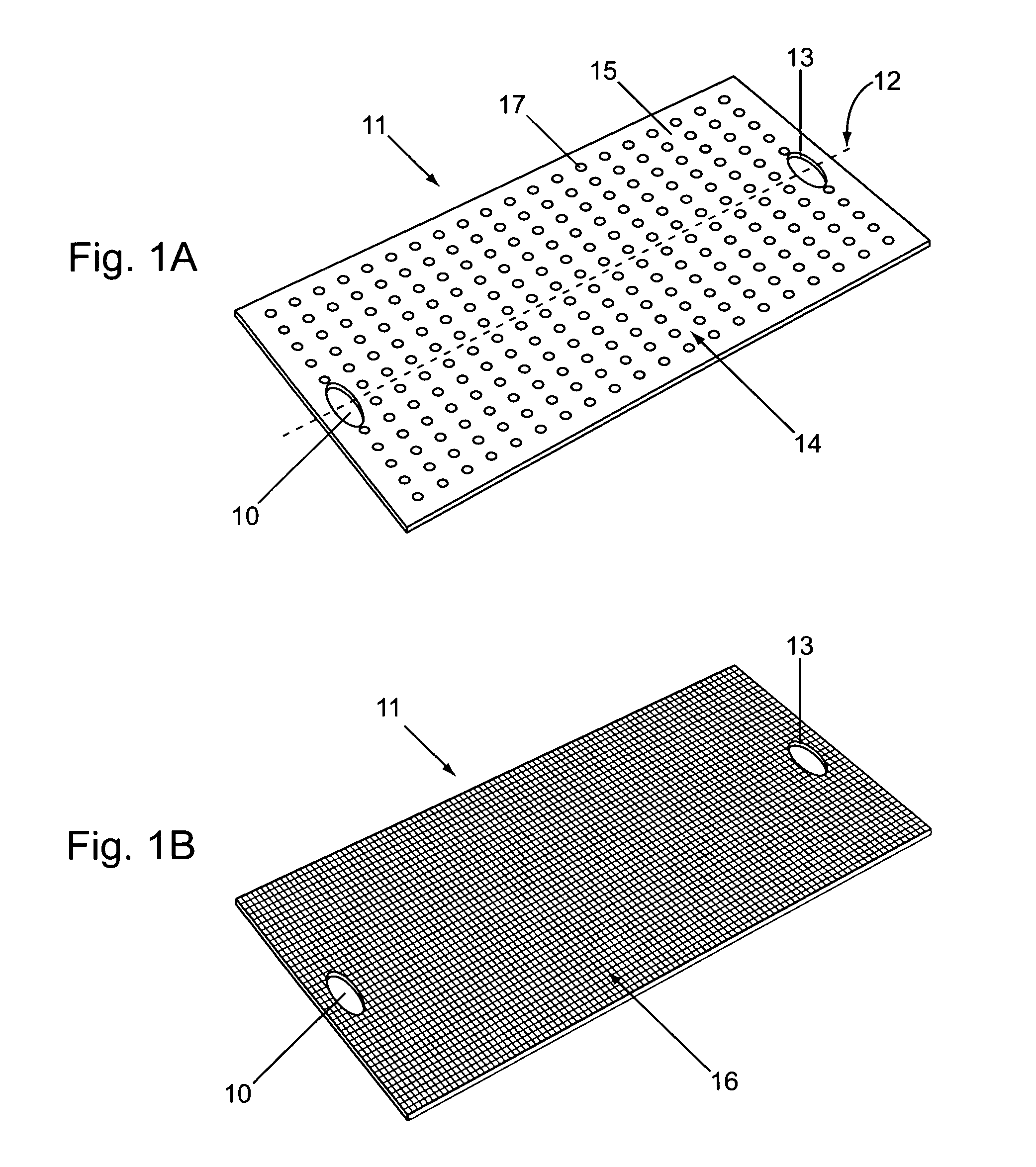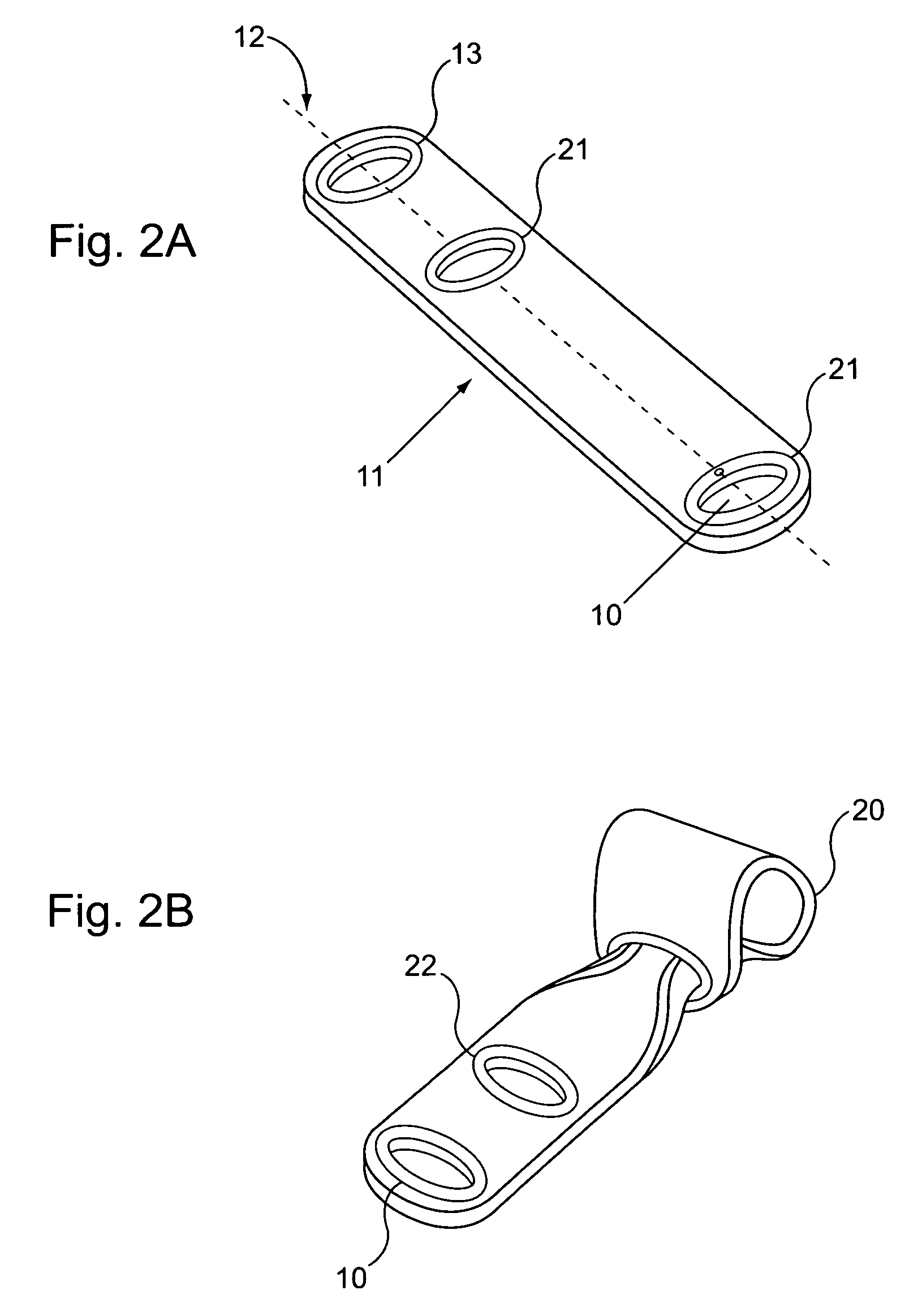Fabric yoga straps
a fabric yoga strap and yoga mat technology, applied in the field of multifunctional fabric yoga straps and composite yoga mats, can solve the problems of poor ergonomic and efficient features of current yoga mats and accessories, inability to carry traditional mats, and many modern mats that are uncomfortable and slippery, and achieve the effect of more sure grip
- Summary
- Abstract
- Description
- Claims
- Application Information
AI Technical Summary
Benefits of technology
Problems solved by technology
Method used
Image
Examples
example 1
Yoga Mat with Frictional Material on Both Sides
[0072]A yoga mat can be fabricated with frictional material disposed on both sides of the moisture absorbent fabric sheet to provide stability and comfort. Imprinted frictional material 17 is arrayed on top (first) side 14 in a pattern of dots to provide a frictional surface and gripable texture to the top side, as shown in FIG. 1A. Moisture absorbent fabric 15, exposed between and around the frictional material dots, absorbs moisture away from the dots and provides a surface that “breathes” for the comfort of the practitioner. The top side frictional material is foamy, resilient, and hydrophilic. Bottom (second) side 16 is substantially covered with an impermeable layer of frictional material having a grid pattern of linear grooves, as shown in FIG. 1B. The bottom side frictional material layer can prevent transfer of moisture between the practitioner and floor while providing a tough non-slip surface. Such fabrics can also be used in ...
example 2
Fabric Yoga Strap
[0074]A yoga strap was manufactured with a flexible filament and a fabric sheet having structures appropriate to function in providing the multiple benefits of the invention. Although straps and mats are known in the yoga art to be useful for certain functions, the combination of the strap and fabric sheet provides benefits not present in the independent structures.
[0075]An 80 inch long by 1.5 inch wide flat cotton strap was formed into a loop by sewing together the two ends two cut ends of the strap material. A 19-inch by 25-inch microfiber towel was prepared with the 4 peripheral edge sides reinforced with thread stitching. 1.5-inches of a first long peripheral edge (25-inch side) was folded over to form a hem and capturing a length of the cotton strap. The strap was attached to the fabric sheet by stitching through the hem fold layers of the sheet together with the captured strap material. This was repeated on the opposite second long peripheral edge section to c...
PUM
| Property | Measurement | Unit |
|---|---|---|
| length | aaaaa | aaaaa |
| length | aaaaa | aaaaa |
| width | aaaaa | aaaaa |
Abstract
Description
Claims
Application Information
 Login to View More
Login to View More - R&D
- Intellectual Property
- Life Sciences
- Materials
- Tech Scout
- Unparalleled Data Quality
- Higher Quality Content
- 60% Fewer Hallucinations
Browse by: Latest US Patents, China's latest patents, Technical Efficacy Thesaurus, Application Domain, Technology Topic, Popular Technical Reports.
© 2025 PatSnap. All rights reserved.Legal|Privacy policy|Modern Slavery Act Transparency Statement|Sitemap|About US| Contact US: help@patsnap.com



